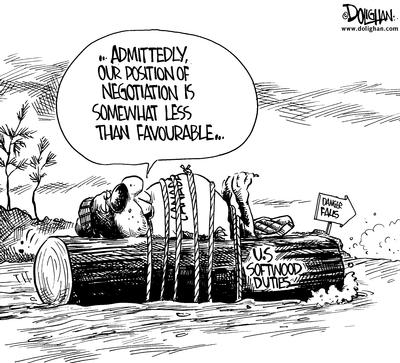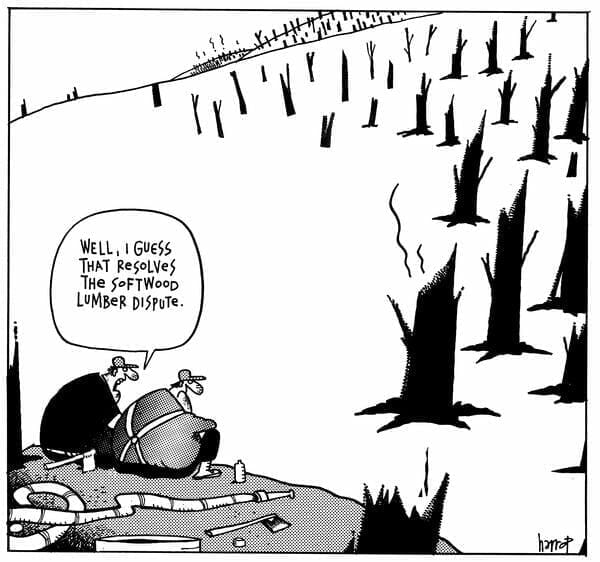It’s easy to point at our neighbours to the south and accuse them of behaving in ways common to abusive imperialists because they have a track record in trade, and politics, of doing just that—but sometimes our problems are homegrown.
From our lofty perch in downtown Vancouver, whether we work as work as baristas, bank tellers or lowly journalists, it may not be immediately apparent that the majority of Canada’s economic well-being relies on the contributions of hard-working people living in the rural hinterlands.
But go up north for a weekend and you’ll meet a different breed of British Columbian. Families with different values and outlooks on life but who, just like us, often enough don’t have enough money and worry about their futures.
These people see firsthand how Canada’s economy shudders under the weight of the movements of international bodies, and they often bear a fair amount of discontentment and anger at the government for their misfortune.
For those who rely on the lumber industry for their livelihood, they’re not wrong.
Here’s Wikipedia’s take:
The heart of the dispute is the claim that the Canadian lumber industry is unfairly subsidized by federal and provincial governments, as most timber in Canada is owned by the provincial governments. The prices charged to harvest the timber are set https://e4njohordzs.exactdn.com/wp-content/uploads/2021/10/tnw8sVO3j-2.pngistratively, rather than through the competitive marketplace. The United States claims that the Canadian arrangement constitutes an unfair subsidy, and is thus subject to U.S. trade remedy laws, where foreign trade benefiting from subsidies can be subject to a countervailing duty tariff, to offset the subsidy and bring the price of the commodity back up to market rates.
The U.S. Department of Commerce accused Canada of unfairly subsidizing and dumping softwood lumber, which is commonly used in the construction of homes. They have gone to the World Trade Organization (WTO) for arbitration a few times, and the latest dispute was won decisively by the United States. The duties affect about $5.66 billion worth of imports.
That tariff raises prices across the board, which lowers production and leads to pain on the balance sheet and emptiness in the cupboards of the workers in the mills.
In 2013, production in the forest sector contributed $19.8 billion—or 1.25%—to Canada’s real gross domestic product (GDP). Now six years later, many Canadian sawmills are struggling. B.C. is Canada’s largest lumber-producing province, responsible for exporting over 514 million board feet of lumber to the U.S. in October 2018, down from 645 million board feet in 2017.

Plenty of Canadian lumber leaders have absorbed the hit—including West Fraser Timber (WFT.T), Canfor (CFP.T), Conifex Timber (CFF.T) and Interfor (IFP.T)—and have been forced to restrict production. West Fraser and Canfor have curtailed production more than once.
Canfor and Interfor announced more production cutbacks in April.
All of this leads to layoffs, belt-tightening and economic stagnation.
The companies blamed lumber markets, high log costs, log supply constraints, falling lumber prices and U.S. import tariffs as factors. Instead, maybe they should have considered their relationship with the government.
There’s nothing intrinsically wrong with subsidies (and let’s face it, that’s exactly what they are) but we shouldn’t expect special dispensation when dealing with other countries. We agreed to play by the rules when we ratified the GATT and then re-upped for the formation of the WTO. Maybe we should play ball and compete rather than hedge our bets with these subsidies which do little more than feed our national inferiority complex.
—Joseph Morton

